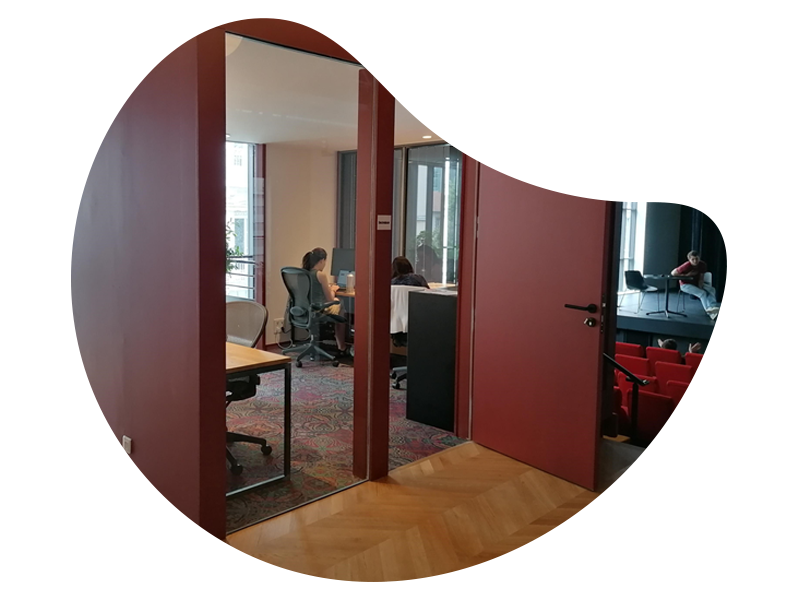Description of the product
The Electroducer Sleeve is a sterile non-implantable medical device made of highly innovative conductive material. It is intended to transmit, in a safe way for the patient, the electrical signal from an external pacemaker to the heart through a guidewire used during percutaneous cardiovascular interventions. For that, the Electroducer Sleeve is assembled on an introducer and connected, using cables, to an external pacemaker and to a guidewire. In this configuration, the guidewire acts as unipolar pacing lead.
The “Direct Wire Pacing technique” used during the coronary and structural interventions is thus simplified and secured, once the device avoids the complex manipulation of needles and clamps during the intervention, and consequently the risk of electrical signal loss.
Furthermore, in case of high risk procedures which may require temporary cardiac pacing, the preventive installation of the Electroducer Sleeve can reduce the time required for the emergency pacing when compared to the placement of a temporary pacing catheter or to the direct pacing system using a subcutaneous needle. Indeed it is done with the standard insertion of the introducer at the beginning of the procedure.
The Electroducer Sleeve is adaptable to the most commonly introducers used during these procedures (6Fr and ≥ 65mm in length).

Origin of the project
Heart valves pathologies and coronary arteries are more and more common in our western lifestyle societies. 2% of the adult population and 10 to 15% of the population over 75 years of age is carrier of a heart valve pathology. The most common pathologies of these valves and arteries are narrowing. This narrowing can have different sources (malformation, infections, rheumatism, degeneration) and slows the blood passage. While they may be asymptomatic, these pathologies generally induce palpitations, shortness of breath, chest pain or discomfort and can lead to death.
The treatment of these pathologies is the fight of Dr Benjamin Faurie: is has been working for years on.
It exists two types of surgical procedures to treat the narrowing pathologies:
Open heart surgery
Endovascular surgery (also called percutaneous surgery)
The percutaneous surgery consists:
In a case of heart valves narrowing: i) inserting a valve prosthesis endovascularly into the femoral artery, (ii) delivering the prosthesis to the diseased valve through the femoral artery using a very thin guide, and (iii) deploying the prosthesis using a balloon so that it takes over the diseased valve. These procedures are named TAVI (Transcatheter Aortic Valve Implantation), TTVR (pour Transcatheter Tricuspid Valve Repair) and TMVR (Transcatheter Mitral Valve Repair).
In a case of coronary arteries narrowing: (i) inserting a balloon endovascularly into an artery, (ii) delivering the balloon to the narrowing of the artery using a very thin guide, and (iii) inflating the balloon to dilate the artery. Most of the time, a stent is put in place to keep the artery open at the right diameter. This procedure is named PCI (Percutaneous Coronary Intervention).
Percutaneous cardiovascular interventions allow the interventional cardiologist to reach the affected area and to treat it through vascular routes of access such as femoral or radial routes. For these kinds of procedures, the percutaneous surgery has the advantage to be much less invasive and traumatic for the patient than the open-heart surgery. That is why the endovascular surgery is more and more practiced: 135 000 TAVI procedures and 5 million PCI procedures have been practiced in 2018 and the figures are still growing.
Challenges addressed by the project
Despite considerable progress on techniques and devices, percutaneous surgeries remain complex:
– complexity of positioning of the balloon, stents and/or prosthesis
– complexity of placement of the stimulation probe
– risk of displacement of the stimulation probe
– risk of adverse events related to the stimulation probe
To ensure the optimal positioning of the stents/valves or stimulate the heart in case of conduction disturbances, temporary cardiac stimulation may be required to stabilize the heart or stimulate it. Usually this stimulation is performed via a temporary pacing catheter. This procedure requires an additional venous access and the insertion of a stimulation catheter with an inherent risk of vascular or cardiac complications.
In order to avoid the use of this catheter and the risks associated to it, a new stimulation strategy has been developed by Dr Benjamin Faurie: the “Direct Wire Pacing technique”. Between 2011 and 2016, he has brought in, developed, and published this new surgical procedure answering the main challenges raised by endovascular treatment of heart valve and coronary artery pathologies.
This new technique makes it possible to eliminate the use of a Pacemaker (complex to apply, complex to use and source of complications) to temporary stop the heart of the patient, which is essential for the treatment. Indeed the cardiac stimulation is provided via the guidewire inserted into the left ventricle or into the coronary arteries.
The clinicals research lead by Dr Benjamin Faurie the last 5 years enabled to him to demonstrate the validity and the interest of the technique (on average, reduction of 12% of duration of interventions and 10% of risks of complications). Finally, they enabled him to obtain the rapid and massive support of the French cardiology community.
In order to simplify, make the implementation of his technique more reliable, improve, secure and democratize it on an international scale, Dr Benjamin Faurie is developing a new medical device enabling the temporary PaceMaker function to be integrated directly into the standard guide used during all cardiovascular procedures: the Electroducer Sleeve.


